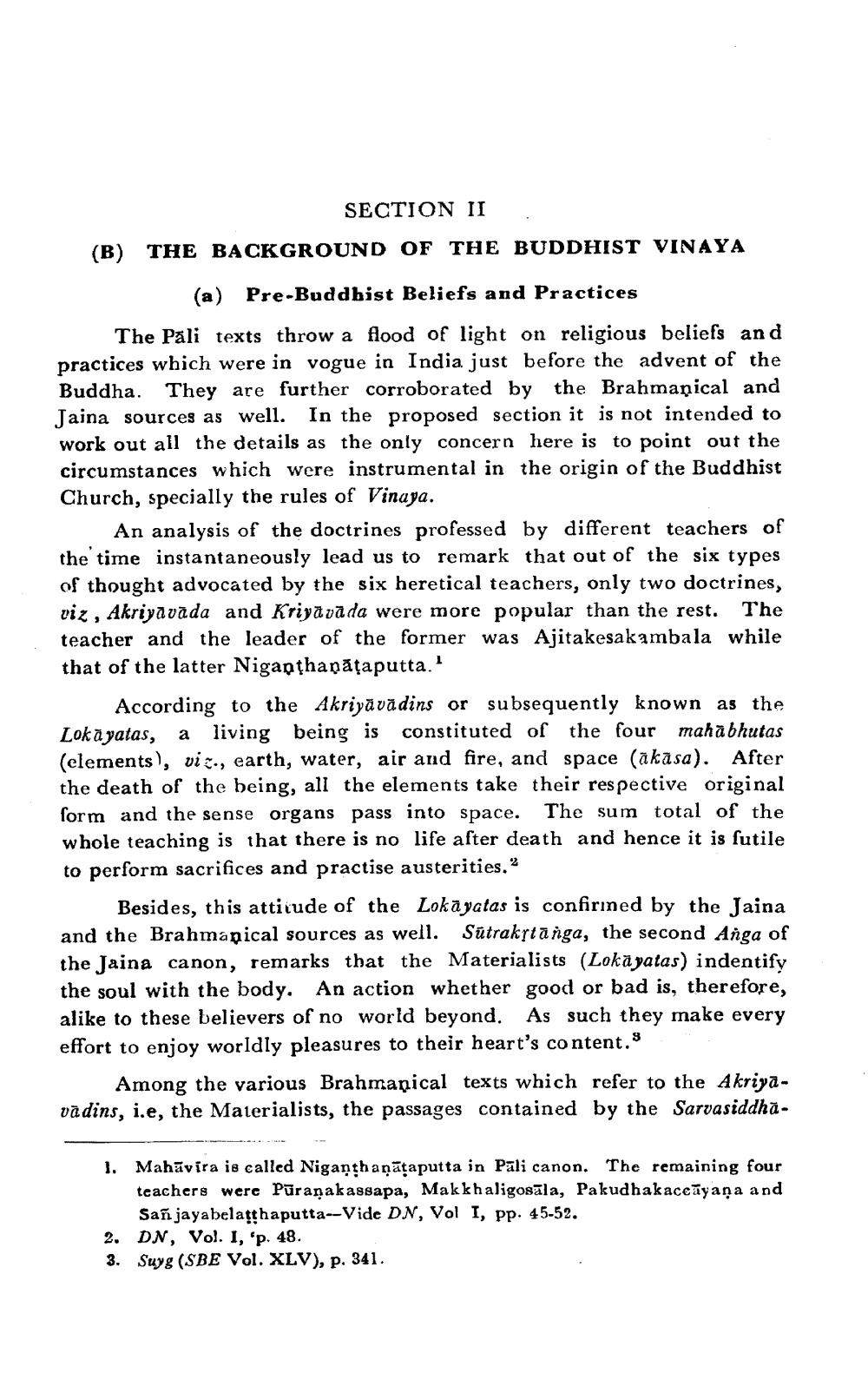________________
SECTION II
(B) THE BACKGROUND OF THE BUDDHIST VINAYA
(a) Pre-Buddhist Beliefs and Practices
The Pali texts throw a flood of light on religious beliefs and practices which were in vogue in India just before the advent of the Buddha. They are further corroborated by the Brahmaņical and Jaina sources as well. In the proposed section it is not intended to work out all the details as the only concern here is to point out the circumstances which were instrumental in the origin of the Buddhist Church, specially the rules of Vinaya.
An analysis of the doctrines professed by different teachers of the time instantaneously lead us to remark that out of the six types of thought advocated by the six heretical teachers, only two doctrines, viz , Akriyāvāda and Kriyavāda were more popular than the rest. The teacher and the leader of the former was Ajitakesakambala while that of the latter Niganthapātaputta."
According to the Akriyāvādins or subsequently known as the Lokāyatas, a living being is constituted of the four mahabhutas (elements), vit., earth, water, air and fire, and space (akāsa). After the death of the being, all the elements take their respective original form and the sense organs pass into space. The sum total whole teaching is that there is no life after death and hence it is sutile to perform sacrifices and practise austerities. 2
Besides, this attitude of the Lokayatas is confirmed by the Jaina and the Brahmapical sources as well. Sutrakyta nga, the second Anga of the Jaina canon, remarks that the Materialists (Lokayatas) indentify the soul with the body. An action whether good or bad is, therefore, alike to these believers of no world beyond. As such they make every effort to enjoy worldly pleasures to their heart's content.S
Among the various Brahmanical texts which refer to the Akriyavadins, i.e, the Materialists, the passages contained by the Sarvasiddha
1. Mahāvira is called Niganthaņātaputta in Pali canon. The remaining four
teachers were Pūraņakassapa, Makkhaligosāla, Pakudhakaceāyaṇa and
Sanjayabelatthaputta --Vide DN, Vol I, pp. 45-52. 2. DN, Vol. I, p. 48. 3. Suyg (SBE Vol. XLV), p. 341.




